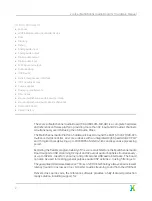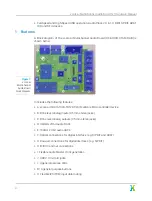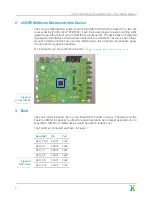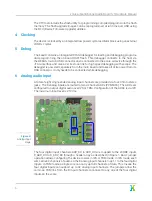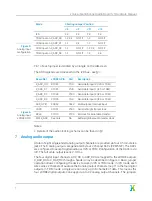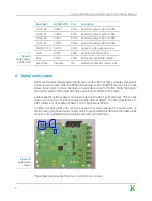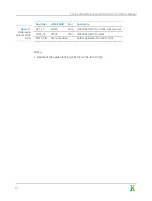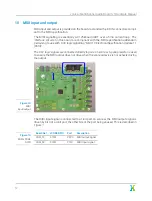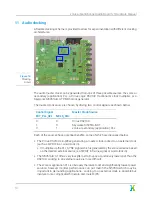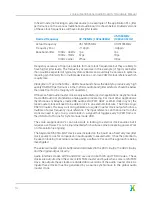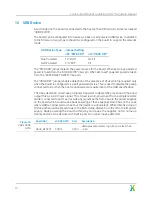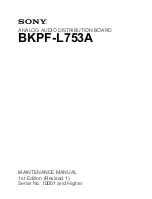
xcore.ai Multichannel Audio Board 1v1 Hardware Manual
The XTC tools include the xflash utility for programming compiled programs into the flash
memory. The flash upgrade images can be reprogrammed at run time over USB using
the DFU (Device Firmware Upgrade) utilities.
4
Clocking
The device is clocked by an integrated low power crystal oscillator block using an external
24MHz crystal.
5
Debug
The board contains an integrated XTAG4 debugger for loading and debugging programs
and programming the on board QSPI flash. This debugger connects to the host via
the DEBUG micro b USB connector and is connected to the xcore.ai device through the
JTAG interface and also a 2 wire xmos link for high speed debugging with xscope. The
debugger is powered separately from the main board and takes all of its power from its
USB connector. It only needs to be connected while debugging.
6
Analog audio input
A total of eight single-ended analog input channels are provided via four 3.5mm stereo
jacks. The 8 analog inputs are routed to two 4 channel ADCs (PCM1865). The ADCs are
configured to output digital audio over I2S or TDM. Configuration of the ADCs is via I2C.
The maximum input level is 2.1Vrms.
Figure 4:
Analog input
stage
The four digital input channels ADC_D0 to ADC_D3 are mapped to the xCORE inputs
X_ADC_D0 to X_ADC_D3 through a header array as described in Figure
. Basic jumper
operation allows configuring the device to work in I2S or TDM mode. In I2S mode, each
wire carries 2 channels of audio so the 8 analog input channels map 1:1 to the four digital
inputs. In TDM mode, a single wire can carry up to 8 channels of data. This means the
four digital inputs can support up to 32 analog input channels. The jumpers allow the
common TDM line from the 8 input channels to connect to any one of the four digital
inputs on the xcore.
6


